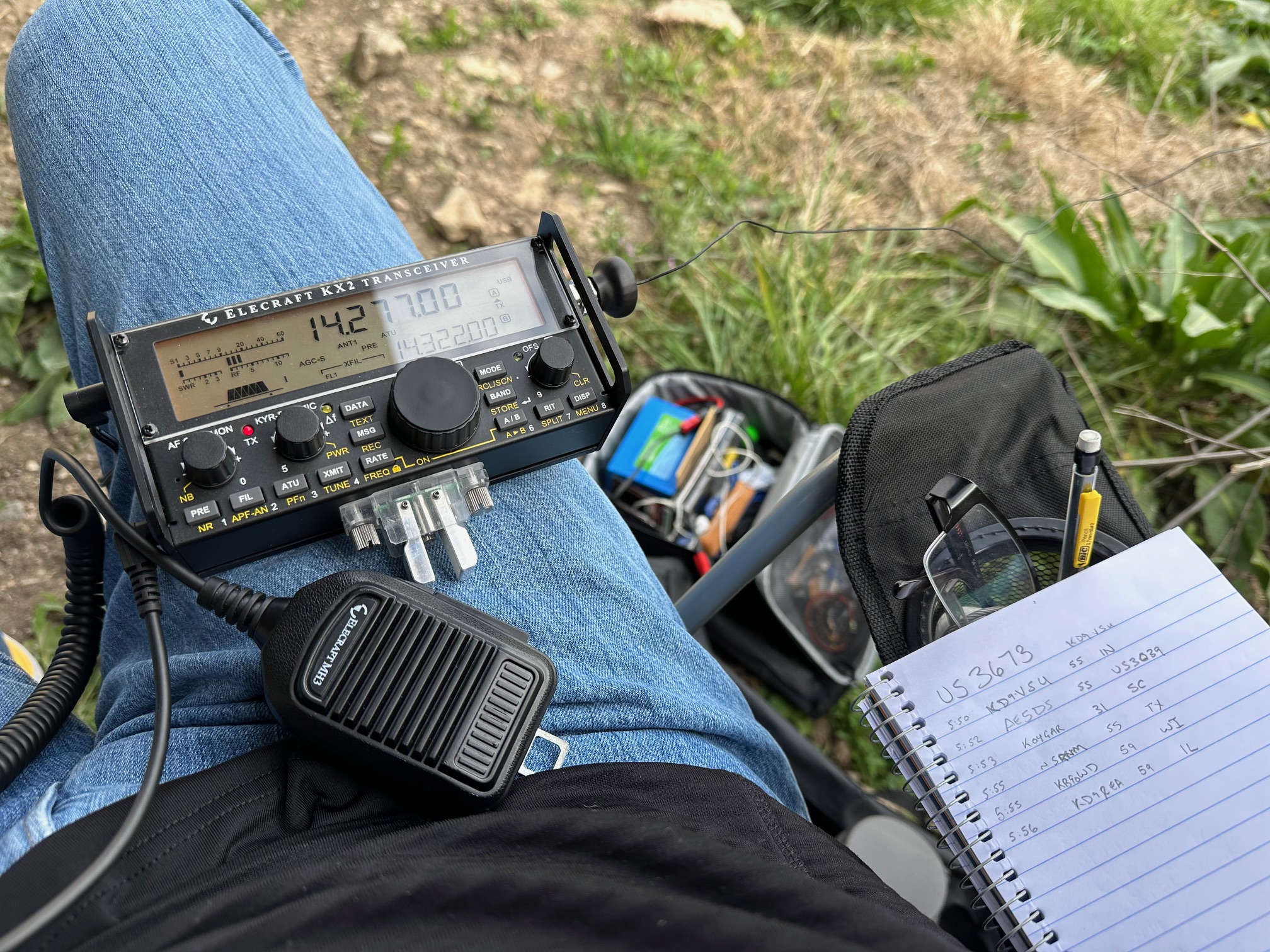N5DUX's Guide to Getting Started in Ham Radio
Welcome! I'm happy you're interested in the hobby of ham radio. I've enjoyed it for many years and I'm glad to help others on their journey. On this page, I want to provide you with information about what it takes to get started in the hobby and give you a few resources for all the many aspects of ham radio you can explore.The first thing to know about ham radio, or amateur radio as it is officially known, is it is a licensed radio service overseen by the Federal Communications Commission, or FCC. To transmit on a ham radio, you must have a license.
Some people get freaked out about the license part because it requires you to take and pass a license test. It's not that hard. I don't have any numbers on it, but I would venture to guess the majority of people that attempt a license test pass the test (provided they actually commit to some studying).
Below are links to study guides, but there are also a number of quality YouTube channels devoted to license test preparation.
License
There are three amateur radio license classes in the United States. They are Technician, General, and Amateur Extra. Each license exam must be passed before moving to the next level. It is entirely possible to pass all three in one sitting - it's been done.- Technician
- This is the entry level license. This grants you privileges to operate VHF and UHF radio frequencies which generally give you close-in communications in the 10-20mi range. Various setups can extend this range and there are other things to do, but most Technicians operate on these frequencies. If you are interested in emergency communications and storm-spotting, the Technician is all you need. There are also other aspects of ham radio Technicians can enjoy such as satellite communications and operating on 10m and 6m ham radio bands. I would also get some hate mail if I didn't mention Technicians can also operate on limited portions of 15m, 40m, and 80m bands using Morse Code (or CW as we call it).
This license test is 35 questions long. You must pass with a 74% which is 26 correct.
For a good study guide, Gordon West's Technician Class Study Guide or Dan Romanchik's free PDF Study Guide (Dan also has a printed copy on Amazon) - General
- This is the license needed to operate on the HF bands (or "shortwave" or world bands). HF opens you up to long range communications with stations literally all around the world and on all continents (including Antarctica). The General has privileges to operate on various ranges of frequencies identified by the FCC and set aside for amateur radio use.
This license test is 35 questions long. You must pass with a 74% which is 26 correct.
For a good study guide, Gordon West's General Class Study Guide. - Amateur Extra
- This is the highest level license class for amateur radio oeprators. It is also awarded for passing the most difficult of the three license exams. Privileges for Amateur Extra include the ability to operate on all ham radio bands without being restricted to certain portions of those bands.
This license test is 50 questions long. You must pass with a 74% which is 37 correct.
For a good study guide, Gordon West's Extra Class Study Guide.
License Test
Testing for your ham radio license can be done in person at an in-person test session or done online from your own computer. Regardless of how you test, since May 20, 2021, anyone seeking an amateur radio license must register on the FCC Commission Registration System (CORES) and receive a 10-digit FCC Registration Number (FRN) prior to testing.To obtain an FRN, the FCC has provided these video tutorials to guide you through the process.
Once you have your FRN, the next step is to locate a test session and, if necessary, schedule your test.
- To locate an in-person Volunteer Examiner test session near you, click here.
- To locate an online Volunteer Examiner test session, click here.
Equipment
These things are the equipment I suggest for beginners just getting started. This is not the best, nor will it be your all-time go-to radio. It's a starter setup just for feeling out the hobby and getting a feel for how ham radio operates.- Baofeng UV-5R VHF/UHF handie-talkie radio - Amazon
- This is one of the most popular radios on the market due to its incredibly low price. However, do not transmit until you have a license!
Not only is it illegal to transmit without a license, anyone you talk to will know you aren't legal since you don't have a valid callsign. - USB Programming Cable for Baofeng - Amazon
- You don't have to have this, but it makes programming so much easier. Free software programs like CHIRP can help program frequencies into the radio with ease. - New antenna for Baofeng - Amazon
- Again, you don't have to have this, but the stock antenna that comes with the Baofeng isn't a great performer. This antenna isn't the most efficient antenna, but it isn't very long and is moderately more efficient. Very generally speaking at this point, the longer the antenna the more efficient it is and the easier it is for others to hear you. (This is a gross oversimplification for now, but you get the point.) Note: this link is a 2-pack of antennas.
